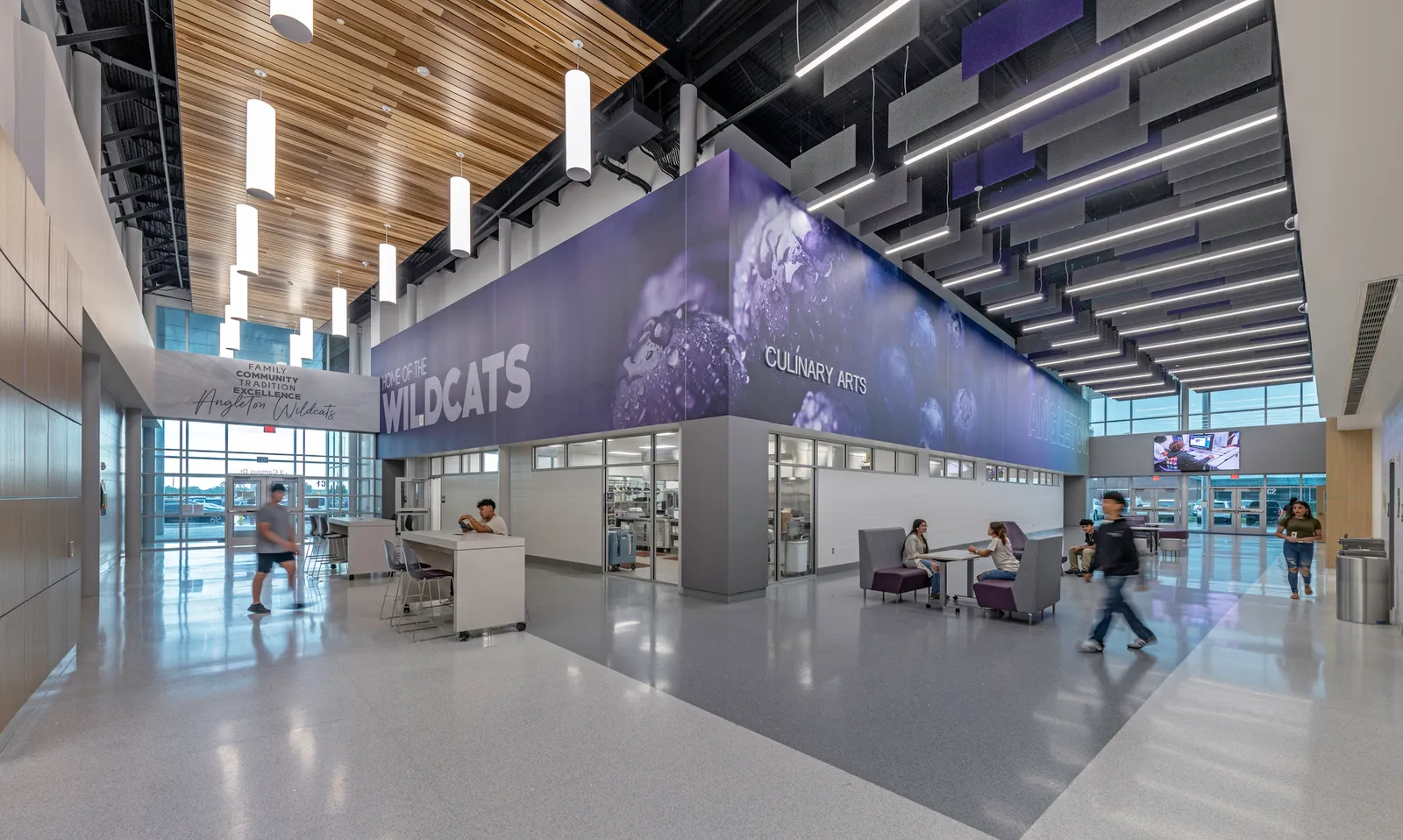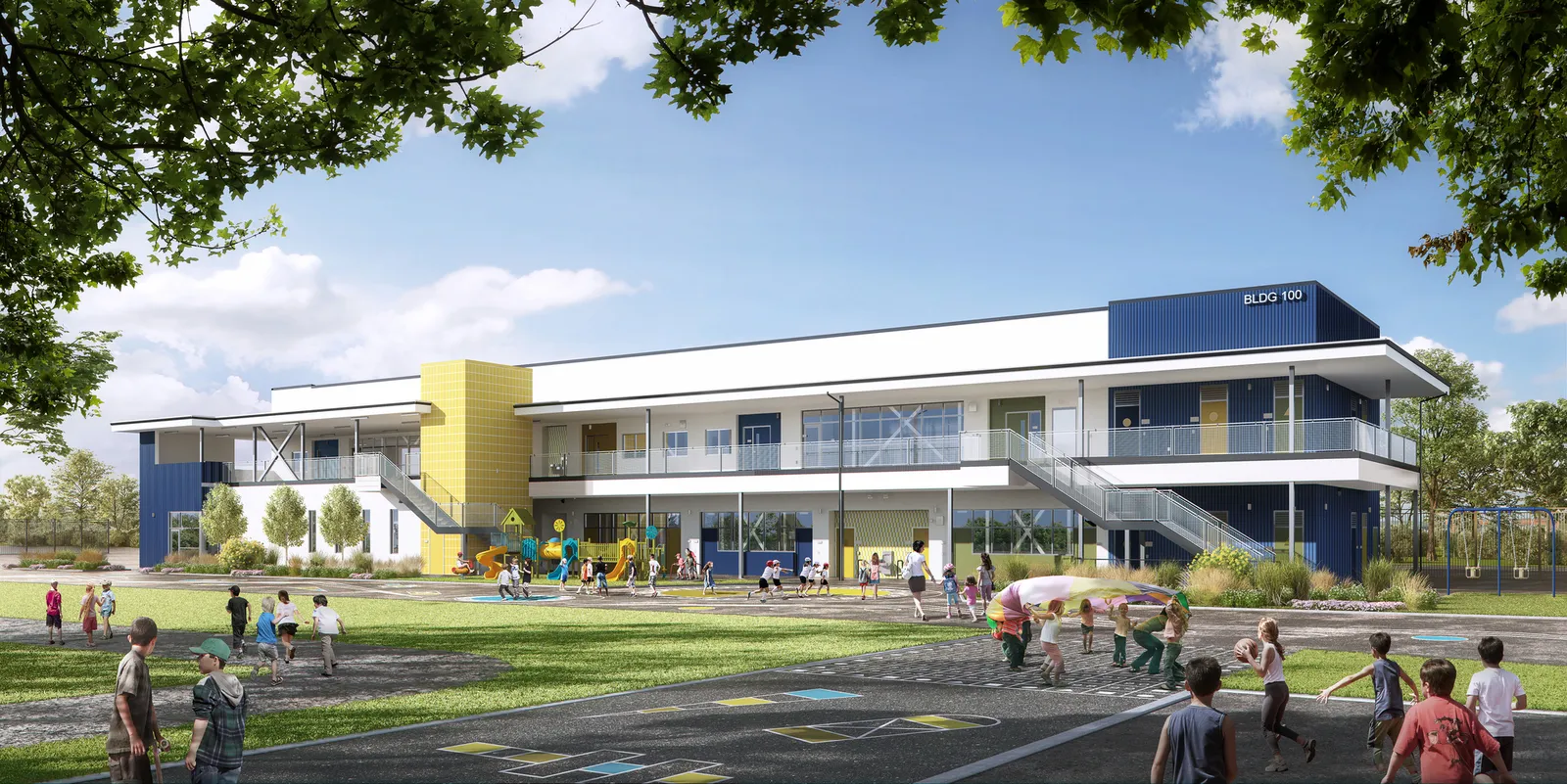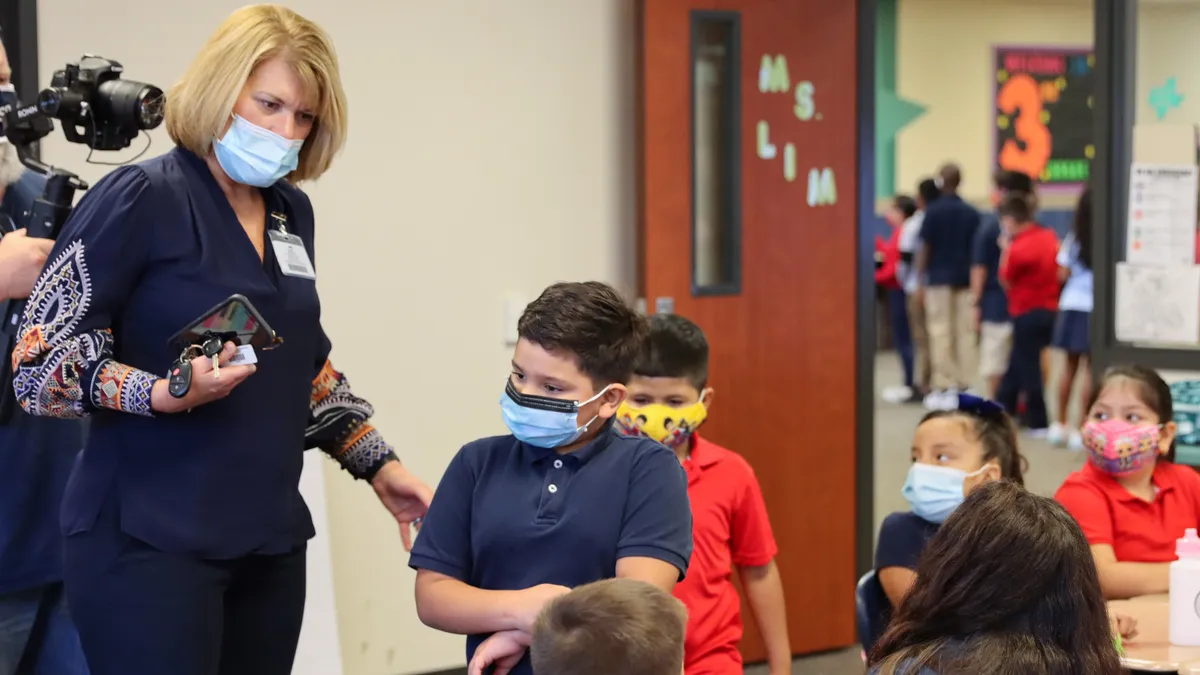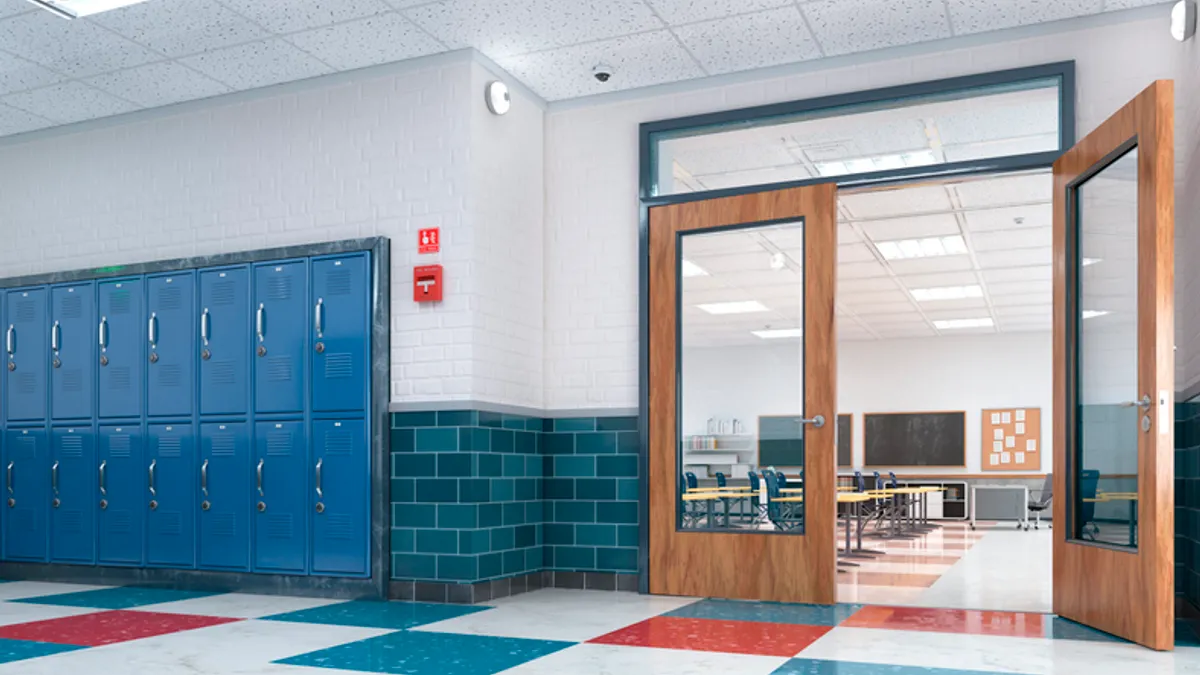Schools investing in campus upgrades are putting more emphasis on spaces that encourage student engagement, allow flexibility for changing enrollments, and ensure student and staff safety, according to experts in school architecture.
Before new spaces are built or existing areas reconfigured, however, there's a lot of planning between school officials and designers about how best to maximize a district's desires with what is practically and financially possible.
"It was with that kind of question that we pulled together diverse thought leaders … to come together and kind of try to answer this question of what is the school of the future," said Melissa Turnbaugh, a board member of the Learning Environments Action Research Network, or LEARN, and partner at PBK, a K-12 and higher education school design firm. LEARN, a new nonprofit organization, is a collaboration of education design experts, district officials and others working to promote safety, access, innovation, health and sustainability in schools.
Turnbaugh said the group will specifically look at best practices and how to replicate those model programs. "There's so much research out there, but it's not necessarily easily curated and accessible," she said.
Meanwhile, as some have their eyes on the future, many schools already are taking new approaches when building or renovating campuses. Here are four trends currently in play, according to architecture and school funding experts working with districts.
Redesigning for school safety
In response to an increase in school shootings and concerns about campus safety, there's heightened interest in better control of who is entering and leaving campuses, several design experts said.
Security is "top of mind" when school systems are planning upgrades, according to Elizabeth Sabol, senior architect and principal in charge at Dahlin, an architecture, planning and interior design firm. Schools are especially seeking help with reconfiguring campuses to have one entry point in and out of the building and on school grounds, she said.
That's been a challenge, because schools typically only have about 10 to 15 minutes to filter potentially hundreds of students into and out of school at the beginning and end of each school day. If everyone is going through one entry point, a great deal of planning is needed to make sure that isn't a safety hazard.
Designing for school safety is also difficult, Turnbaugh said, because some of the design elements that would help protect against threats — such as fewer windows and limited outdoor gathering spots — are in contrast with welcoming learning spaces.
School bathrooms are another safety consideration as districts renovate and build new schools, Turnbaugh said. To minimize bad behaviors that occur in larger bathrooms with multiple toilet stalls, schools are showing interest in building gender-neutral bathrooms or toilet rooms that have sinks for handwashing located just outside, she said.
Making space for career and technical education
Turnbaugh said a growing interest in high school career and technical education programs is fueling not only space redesign but also innovative practices. These include sponsorship and mentorship opportunities with local businesses to contribute funding, experiences or equipment for classrooms.
Additionally, the CTE spaces being created are more true-to-life in that they might mimic a professional broadcast studio, an auto repair center or a hospital emergency room, Turnbaugh said.

Even non-CTE classrooms are getting redos to support hands-on learning, she said.
Students learn well through hands-on applications, allowing them to explore and problem solve, Turnbaugh said. "So that's something we're seeing a lot of."
Having flexibility for enrollment changes
With states like California and Texas expanding access to preschool, districts are looking for opportunities to find space within their existing walls for young learners who need dedicated bathrooms and easy access to play areas.
A new law in California requires schools to add universal transitional kindergarten for all 4-year-olds by the 2025-26 school year. "That's going to impact all elementary schools as they make room for a new grade," said Sabol. "There is a whole other level of care that is necessary for kids that are that young."
Turnbaugh said research shows it's best to limit transition times for young learners, meaning these schools will need to find or create learning environments where a classroom, play area and a space for meal times are in close proximity.

Sabol said Dahlin is working with the San Diego Unified School District to add transitional kindergarten classrooms to Paradise Hills Elementary School, as well as a new administrative space with more meeting areas. The original school was built in the 1950s. Construction is scheduled to start in December.
School district budgets are also driving desires for flexible learning spaces that serve a variety of purposes, Turnbaugh said. For example, some school districts used Elementary and Secondary School Emergency Relief funding to create outdoor learning spaces that can also be used for meetings, performances and recess.
"These flexible spaces that can wear a lot of hats are really important," she said.
Planning for sustainability
As more extreme weather threatens schools and communities, district leaders in certain parts of the country are interested in making their campuses flood and hurricane resistant. High summer temperatures are also leading some campuses to install resilient landscaping, Turnbaugh said.
In addition, school systems are looking at incorporating energy efficient elements like solar panels and charging stations for electric vehicles, said Teri Samples, a partner in real estate and construction practice for Wipfli, an accounting and consulting firm that works with school districts.
Depending on the project, school systems can get financial incentives for energy efficient or "green conscious" upgrades, said Kathleen Dubois, Wipfli's nonprofit, government and education practice leader.
"If you're conscious of your environment and you build to code, you're probably — and I don't want to say you completely — but you probably will get a tax incentive of some sort," Dubois said. However, she said she advises schools not to take on construction projects just to get a tax incentive if it doesn't make sense financially or if sustainability is an afterthought.







 Dive Awards
Dive Awards














